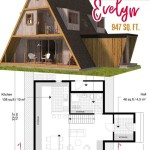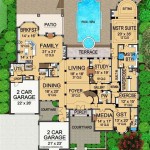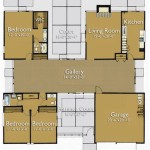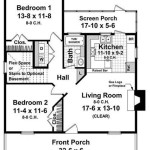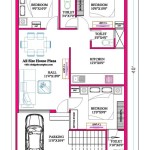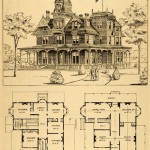3 Bedroom Concrete House Plans: Durability, Design, and Practical Considerations
Concrete, as a construction material, has become increasingly popular for residential construction due to its inherent durability, design flexibility, and potential for energy efficiency. Three-bedroom concrete house plans are particularly attractive to those seeking a blend of modern aesthetics, long-term resilience, and adaptable living spaces. This article will explore the various aspects of 3-bedroom concrete house plans, covering design considerations, construction techniques, cost factors, and the unique advantages that concrete offers over traditional building materials.
The Allure of Concrete in Residential Design
Concrete is more than just a structural material; it's a design element. Modern concrete construction techniques allow for a wide range of architectural styles, from minimalist and industrial aesthetics to designs that mimic natural materials like wood or stone. The inherent versatility of concrete enables architects and designers to create unique and personalized homes. Its thermal mass properties are also a significant advantage, contributing to energy efficiency by moderating internal temperature fluctuations.
The use of concrete in residential design is evolving. Polished concrete floors, exposed concrete walls, and precast concrete panels are becoming increasingly common, adding a contemporary edge to interiors. Furthermore, concrete can be tinted and textured to create a variety of visual effects, allowing homeowners to customize the look and feel of their living spaces. The durability of concrete also translates to lower maintenance costs over the lifespan of the home.
Beyond aesthetics, concrete offers significant structural benefits. Its ability to withstand extreme weather conditions, resist fire damage, and provide sound insulation makes it a practical choice for homeowners seeking long-term security and comfort. In areas prone to natural disasters, such as hurricanes or earthquakes, a concrete home offers a superior level of protection compared to traditional stick-built construction.
Key Considerations for 3-Bedroom Concrete House Plans
When considering a 3-bedroom concrete house plan, several factors need careful evaluation. These include design style, construction method, insulation requirements, and cost implications. A well-planned design will maximize the benefits of concrete construction while minimizing potential drawbacks.
Design Style:
Concrete lends itself well to a variety of architectural styles, including modern, contemporary, and minimalist designs. However, it can also be adapted to more traditional styles with the use of appropriate finishes and detailing. The choice of design style will influence the overall aesthetic of the home and the specific construction techniques employed.Construction Method:
Several methods can be used to construct a concrete house, including poured-in-place concrete, precast concrete panels, and insulated concrete forms (ICFs). Each method has its own advantages and disadvantages in terms of cost, speed of construction, and design flexibility. Poured-in-place concrete involves pouring concrete into forms on-site, allowing for custom shapes and designs. Precast concrete panels are manufactured off-site and then assembled on the building site, offering faster construction times. ICFs are interlocking foam blocks that are filled with concrete, providing excellent insulation and structural integrity.Insulation:
While concrete has excellent thermal mass, it is not a good insulator on its own. Therefore, proper insulation is crucial in a concrete house to maintain comfortable indoor temperatures and minimize energy consumption. Insulation can be applied to the interior or exterior of the concrete walls, or it can be integrated into the concrete structure itself, as with ICFs. The type and amount of insulation required will depend on the climate and the desired level of energy efficiency.Cost:
Concrete construction can be more expensive upfront than traditional wood-frame construction. However, the long-term benefits of concrete, such as reduced maintenance costs, lower energy bills, and increased durability, can offset the initial investment. The cost of a concrete house will vary depending on the design complexity, the construction method used, the local labor rates, and the cost of materials.Exploring Different 3-Bedroom Concrete House Plan Layouts
Three-bedroom concrete house plans can be adapted to a wide range of lifestyles and family needs. The layout of the bedrooms, living spaces, and service areas can be customized to create a functional and comfortable home. Popular layouts include open-concept designs, split-bedroom plans, and two-story configurations.
Open-Concept Designs:
Open-concept layouts, where the living room, dining area, and kitchen flow seamlessly together, are popular in modern concrete homes. This design style creates a spacious and airy feel, making the home feel larger and more inviting. Concrete's ability to span large distances without the need for supporting walls makes it ideal for open-concept designs.Split-Bedroom Plans:
Split-bedroom plans separate the master bedroom from the other bedrooms, providing greater privacy for the homeowners. This layout is often preferred by families with older children or those who frequently host guests. In a concrete home, split-bedroom plans can be easily achieved with strategic placement of interior walls.Two-Story Configurations:
Two-story concrete houses offer greater living space on a smaller footprint. Concrete's structural strength makes it well-suited for multi-story construction. The second floor can be constructed using concrete slabs or other materials, depending on the design and budget.Regardless of the layout chosen, careful consideration should be given to the placement of windows and doors to maximize natural light and ventilation. Concrete homes can sometimes feel dark and heavy if not properly designed to capture sunlight. Energy-efficient windows and doors will also help to reduce energy consumption and improve the overall comfort of the home.
In addition to the basic layout, interior design elements play a crucial role in creating a comfortable and inviting living space. The use of warm colors, soft textures, and natural materials can help to soften the industrial feel of concrete and create a more welcoming atmosphere. Thoughtful lighting design is also essential to highlight the unique features of the concrete structure and create a sense of depth and dimension.
Advantages of Choosing Concrete for a 3-Bedroom House
Concrete offers a multitude of advantages over traditional building materials, making it an increasingly popular choice for residential construction. These advantages include durability, energy efficiency, fire resistance, sound insulation, and design flexibility.
Durability:
Concrete is an incredibly durable material that can withstand extreme weather conditions, resist pests and decay, and provide long-lasting structural integrity. A concrete home can last for generations with minimal maintenance, making it a sound investment for the future.Energy Efficiency:
Concrete's thermal mass properties help to regulate indoor temperatures, reducing the need for heating and cooling. In hot climates, concrete walls absorb heat during the day and release it slowly at night, keeping the interior cool. In cold climates, concrete walls store heat from the sun and release it gradually, reducing heating costs. When combined with proper insulation, a concrete home can be significantly more energy-efficient than a traditional wood-frame home.Fire Resistance:
Concrete is a non-combustible material that offers excellent fire resistance. A concrete home can withstand a fire for a longer period of time than a wood-frame home, providing occupants with more time to escape and potentially preventing the fire from spreading to neighboring properties.Sound Insulation:
Concrete provides excellent sound insulation, reducing noise transmission from outside and between rooms. This is particularly beneficial in urban areas or for families with young children. A concrete home can create a peaceful and quiet living environment, free from the distractions of external noise.Design Flexibility:
Concrete can be molded into almost any shape or form, allowing for a wide range of architectural styles and design possibilities. From minimalist and contemporary designs to more traditional styles, concrete can be adapted to suit any aesthetic preference. The ability to create large, open spaces without the need for supporting walls is another significant advantage of concrete construction.In addition to these core advantages, concrete is also a sustainable building material. Concrete is made from readily available materials and can be recycled or reused at the end of its lifespan. The long lifespan of a concrete home also reduces the need for frequent repairs and replacements, further minimizing its environmental impact. Choosing a concrete home is a decision that benefits both the homeowner and the environment.
By carefully considering design choices, construction methods, and cost factors, homeowners can leverage the unique advantages of concrete to create a durable, energy-efficient, and aesthetically pleasing 3-bedroom house that will stand the test of time.

Pin Page

Simple 3 Bedroom Bungalow House Plan Muthurwa Com

House Plan 107 1096 3 Bedroom 1619 Sq Ft Style Concrete Block Icf Home Tpc Aa 9401

Floor Plan For Affordable 1 100 Sf House With 3 Bedrooms And 2 Bathrooms Evstudio

17 Three Bedroom House Floor Plans

Cool Energy Efficient Concrete House Plans Houseplans Blog Com

Cool Energy Efficient Concrete House Plans Houseplans Blog Com

17 Three Bedroom House Floor Plans

Cool Energy Efficient Concrete House Plans Houseplans Blog Com

Concrete House Plans Icf And Block Modern Home


